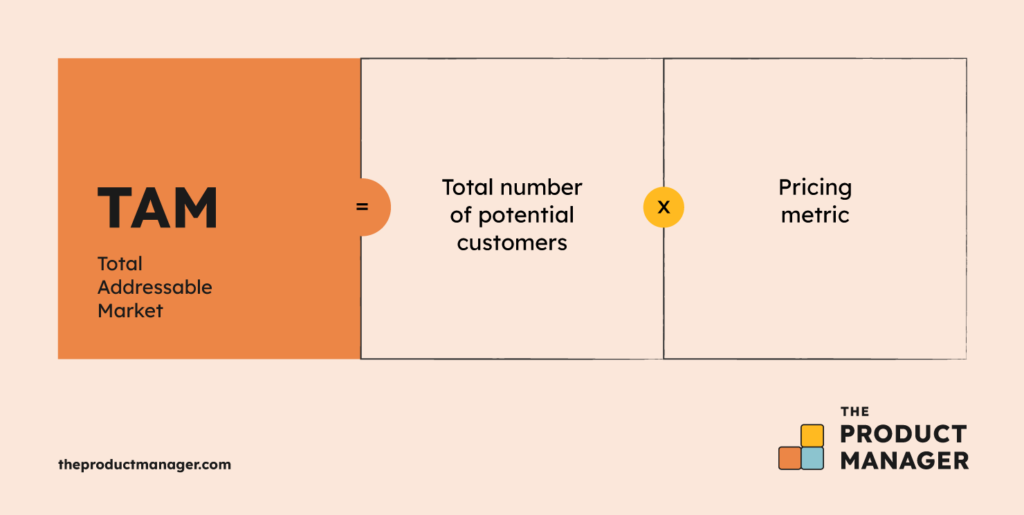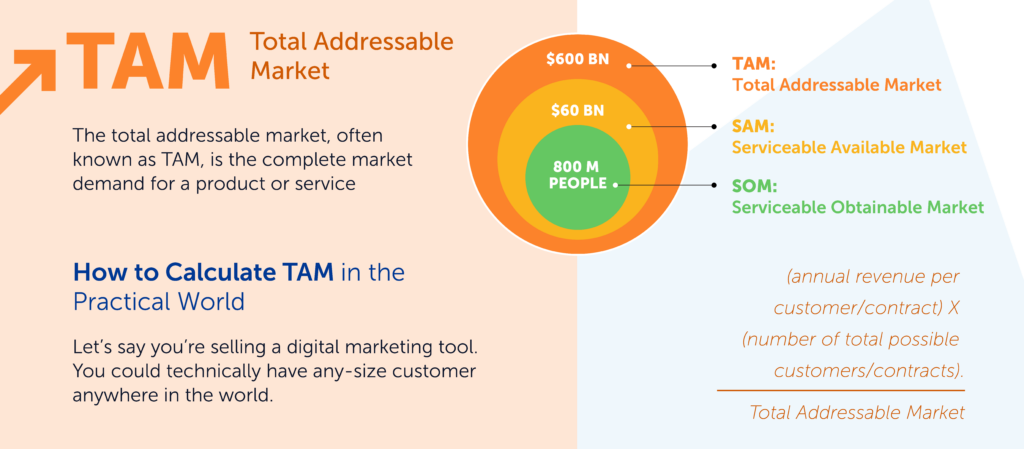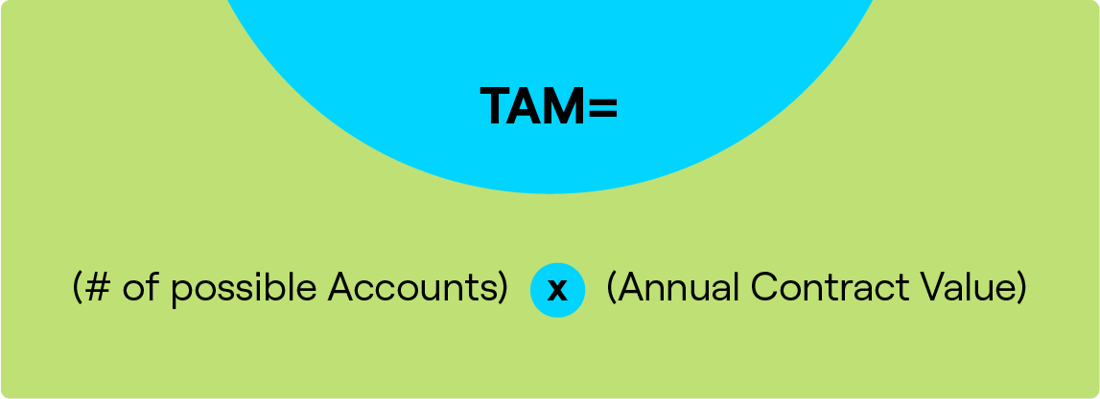Discover the key steps and essential tools for accurately calculating your total addressable market – a must-read for businesses!

Image courtesy of via DALL-E 3
Table of Contents
- Introduction: What is Total Addressable Market (TAM)?
- Step 1: Define Your Market
- Step 2: Research Market Size
- Step 3: Segment Your Market
- Step 4: Calculate the TAM
- Tools to Help You Calculate TAM
- Real-World Example: TAM for a Lemonade Stand
- Conclusion: Putting It All Together
- FAQs About Calculating TAM
Introduction: What is Total Addressable Market (TAM)?
In the world of business, understanding your Total Addressable Market, often referred to as TAM, is crucial for making informed decisions and setting realistic goals. But what exactly is this TAM, and why is it so important? Let’s break it down in simple terms.
Understanding TAM
Imagine you have a lemonade stand. Your TAM would be the total number of people in your neighborhood who might want to buy your lemonade. It includes everyone who walks by, gets thirsty, and is willing to pay for a refreshing drink.
Why is TAM Important?
Knowing your TAM helps you figure out the potential size of your market. It allows you to see how many customers you could have and how much revenue you might generate. By understanding your TAM, you can make smarter decisions about things like pricing, marketing strategies, and future growth opportunities.
Now that we have a basic grasp of what TAM is and why it matters, let’s dive deeper into how businesses can utilize this concept to their advantage.
Step 1: Define Your Market
Before diving into calculating your Total Addressable Market (TAM), it’s crucial to clearly define your market. This step is all about understanding who your potential customers are and what problems your product or service solves for them.
Who Are Your Customers?
Identifying your customers involves looking at the main characteristics of the people who are likely to buy from you. Consider factors like age, gender, location, income level, interests, and any other relevant details that define your target audience.
What Problems Do You Solve?
Every successful business offers solutions to problems. Think about what pain points your product or service addresses for your customers. Whether it’s saving time, improving efficiency, or enhancing their quality of life, understanding the problems you solve helps define your market.
Step 2: Research Market Size
Once you have defined your market, it’s time to delve into researching the size of your potential customer base. Understanding the market size is crucial for businesses to make informed decisions and develop effective strategies.

Image courtesy of theproductmanager.com via Google Images
Using Online Tools
One of the easiest ways to research market size is by utilizing online tools. Platforms like Google Trends can provide valuable insights into trending topics and consumer interests. Market reports from reputable sources can also offer detailed data on the size of specific markets, key players, and growth projections. By analyzing this information, you can gain a better understanding of your Total Addressable Market (TAM).
Talking to Experts
Don’t underestimate the power of talking to industry experts when researching market size. These professionals have firsthand knowledge of market trends, consumer behavior, and competitive landscapes. By consulting with experts in your field, you can gain valuable insights that may not be readily available through online tools. Their expertise can help you make more informed decisions and shape your marketing strategies accordingly.
Step 3: Segment Your Market
Now that you have clearly defined your market and researched its size, it’s time to take the next step: segmenting your market. Market segmentation involves dividing your target market into smaller, more manageable segments based on certain criteria. This allows you to better understand your customers and tailor your marketing strategies to meet their specific needs.
Types of Segments
There are different ways to segment a market, such as demographics, geography, behavior, and psychographics. Demographic segmentation looks at factors like age, gender, income, and education level. Geographic segmentation focuses on where your customers are located. Behavioral segmentation categorizes customers based on their purchasing behavior, such as loyalty or usage rate. Psychographic segmentation looks at customers’ lifestyles, values, and attitudes.
Finding Your Best Segment
Identifying the most promising segment for your business involves analyzing the data you have gathered. Look for segments that show high demand for your product or service, have the capacity to pay, and are reachable through your marketing efforts. By focusing on the segment that aligns best with your business goals and resources, you can maximize your marketing efforts and improve your chances of success.
Step 4: Calculate the TAM
Now that you have defined your market, researched the market size, and segmented your market, it’s time to calculate your Total Addressable Market (TAM). Calculating the TAM gives you a clear picture of the potential size of your market and helps you make informed business decisions.

Image courtesy of salesintel.io via Google Images
Bottom-Up Approach
One way to calculate your TAM is through the bottom-up approach. This method involves starting from the ground up, looking at smaller, more specific numbers to estimate your potential market size. For example, if you are selling a lemonade stand product, you would calculate how many potential customers are in your target area, how often they might buy your product, and at what price.
Top-Down Approach
Another approach to calculating your TAM is the top-down method. This approach starts with larger market data and then refines it down to estimate your potential market size. For example, you could use industry reports to find the total market size for beverages in your region and then narrow it down to the specific market for lemonade products.
Tools to Help You Calculate TAM
When it comes to determining your Total Addressable Market (TAM), there are tools and software available to assist you in this crucial step. These resources can simplify the process and provide you with valuable insights. Here are some options to consider:
Online Calculators
Online TAM calculators are user-friendly tools that can help you streamline the TAM calculation process. By entering relevant data points such as market size, customer segments, and pricing information, these calculators can generate an estimate of your TAM. They eliminate the need for manual calculations and provide a quick and convenient way to obtain an approximation of your market potential.
Software Solutions
There are specialized software solutions available that offer advanced market analysis capabilities to help you calculate your TAM more accurately. These tools leverage complex algorithms and data analytics to provide detailed insights into market size, segmentation, and potential growth opportunities. By utilizing such software, you can gain a deeper understanding of your market and make informed decisions based on data-driven analysis.
Real-World Example: TAM for a Lemonade Stand
Let’s apply the concept of Total Addressable Market (TAM) to a classic business venture – a lemonade stand. By breaking down the steps involved in calculating TAM for a lemonade stand, we can see how this fundamental concept works in a real-world setting.

Image courtesy of www.cognism.com via Google Images
Defining the Lemonade Market
First, let’s identify who our customers would be for the lemonade stand. Typically, customers for a lemonade stand would include people looking to quench their thirst on a hot day. The problem that lemonade solves is providing a refreshing and tasty beverage option in warm weather.
Research and Segment
Next, we need to research the lemonade market size. This involves looking at how many potential customers there are in our neighborhood or at specific events where the lemonade stand might be set up. By segmenting the market into groups such as age demographics, location, or event type, we can better understand who our target customers are.
Calculate TAM
Now, it’s time to crunch the numbers and calculate the Total Addressable Market for our lemonade stand. By estimating the number of potential customers in our chosen market segments, we can determine the TAM. For example, if there are 100 people attending a local fair where the lemonade stand is set up, and we estimate that 50% of them would be interested in purchasing a cup of lemonade, our TAM for that event would be 50 customers.
Conclusion: Putting It All Together
After going through the different steps and tools to calculate your Total Addressable Market (TAM), it’s essential to understand how these pieces fit together to help businesses succeed.
Summary of Steps and Tools
First, you learned about the concept of TAM, or Total Addressable Market, which is crucial for understanding the potential size of your market. Defining your market and identifying your customers and the problems your product or service solves are the foundational steps to calculating TAM.
Next, you discovered how to research market size through online tools like Google Trends and by consulting industry experts. Segmenting your market into smaller, manageable parts helps you identify the most lucrative customer segments for your business.
Then, you delved into the actual calculation of TAM using both the bottom-up approach, which starts with specific data points, and the top-down approach, which utilizes larger market data first. Additionally, you explored various tools and software that can aid in the TAM calculation process.
The Importance of Calculating TAM
Calculating your Total Addressable Market is more than just a numbers game. It provides businesses with a clear understanding of the market size, the potential customer segments to target, and the overall opportunity for growth. By knowing your TAM, you can make informed decisions about marketing strategies, product development, and business expansion.
Ultimately, understanding and accurately calculating your TAM empowers you to optimize your resources, focus on the most promising market segments, and increase your chances of success in a competitive business landscape.
Want to turn these SEO insights into real results? Seorocket is an all-in-one AI SEO solution that uses the power of AI to analyze your competition and craft high-ranking content.
Seorocket offers a suite of powerful tools, including a Keyword Researcher to find the most profitable keywords, an AI Writer to generate unique and Google-friendly content, and an Automatic Publisher to schedule and publish your content directly to your website. Plus, you’ll get real-time performance tracking so you can see exactly what’s working and make adjustments as needed.
Stop just reading about SEO – take action with Seorocket and skyrocket your search rankings today. Sign up for a free trial and see the difference Seorocket can make for your website!
FAQs About Calculating TAM
What if my market changes?
It’s essential to stay flexible and adapt your Total Addressable Market (TAM) calculations as your market evolves. Keep an eye on industry trends, consumer behavior, and competition. If you notice significant shifts, update your TAM to reflect the changes accurately.
Can TAM be too big or too small?
Yes, your TAM can indeed be too big or too small. If your TAM is too large, it might indicate that you’re targeting a market that is too broad, making it challenging to effectively reach all potential customers. On the other hand, if your TAM is too small, you might miss out on valuable opportunities for growth. It’s crucial to strike the right balance and ensure your TAM accurately reflects the market you can realistically target.
How often should I recalculate my TAM?
It’s recommended to reevaluate your TAM regularly, especially when significant changes occur in your industry or market. As a general rule of thumb, consider revisiting your TAM calculations at least annually to ensure they remain relevant and reflective of the current market landscape. By staying updated with your TAM, you can make informed decisions and adjust your strategies accordingly.







